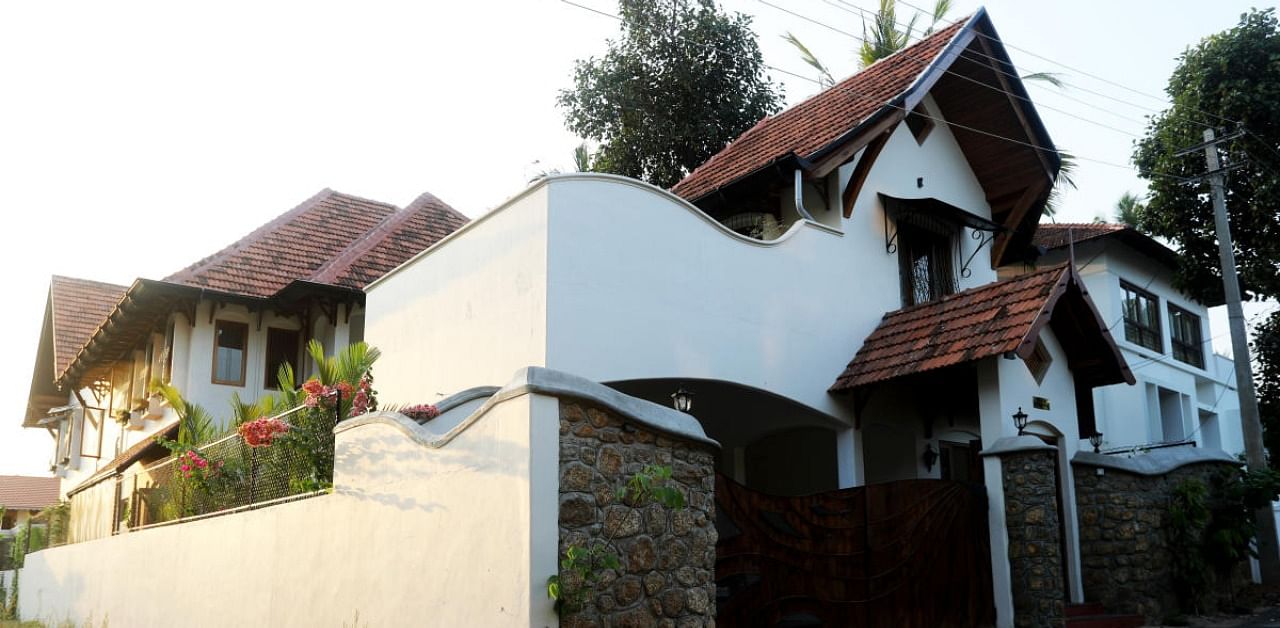

In recent years, ‘sustainability’ has gone from being just an inescapable buzzword to a movement. Whether it is food, fashion, make-up or homes, there is growing awareness around mindful creation and consumption of products in conjunction with nature and our ecosystem.
The concept, of course, is not new. What’s new is the increasing urgency to embrace a more sustainable lifestyle in light of the 21st century’s environmental challenges. This shift in people’s choices and sensibilities in the last two decades have seen the rise of a fresh wave of architects in India who are designing eco-friendly living and work spaces with a blend of traditional and modern techniques.
Ajay Abey and Tara Pandala are one such architect couple from Kochi, Kerala. As directors of Centre for Sustainable Built and Natural Environment (CSBNE), the duo provides biodiversity inclusive sustainable solutions, specialising in urban design, heritage conservation, interiors and landscape.
Sustainable, green or eco-architecture is a design approach that uses locally available resources, natural materials, energy-efficient and climate-friendly methods, while minimising the negative environmental impact of buildings and human life. The aim is to build a structure that is not lifeless block of concrete but one that is endemic to a landscape.
Formative influence
But Ajay feels the term is being misused a lot. To him, sustainable architecture is about responding to the context and the situation keeping in mind the client’s needs, hopes and budget. “Sometimes it’s about saving the client’s money and sometimes it’s about presenting a building aesthetically as an object in that area. But each project of ours is customised to the context while conserving the resources to the maximum extent, so that we don't harm anything in the surrounding,” he says.
They have also devised innovative techniques to help cut down how people consume from nature in resource-starved scenarios and choose to call themselves ‘sustainable built form designers’.
For Tara, it was the formative influence of her father, Prof Eugene Pandala, that inspired a career in this field. A pioneer championing ‘earth architecture’ as an economically feasible and environmentally sustainable alternative, Prof Pandala is renowned for building mud houses.
Accompanying her father to work and construction sites, Tara grew up around T-squares, AutoCAD drawings and other architects. “While in school, I became so familiar with the surroundings that I would help my father’s assistants make models and drawings. By the time I cleared my Plus 2, I had already been exposed to architecture too much to know anything else,” she says.
Ajay, on the other hand, came from Angadipuram, a small village in Kerala, with no prior exposure to architecture. “But growing up around the heritage of small houses and lots of temples drove me towards this profession. My hand drawing skills also helped,” he says.
While Tara graduated from TKM College of Engineering in 2011 and subsequently did her Master’s in Urban Design from CEPT, Ahmedabad, Ajay did his B.Arch from the National Institute of Technology, Calicut in 2005 and then Master’s in Urban Design from National University of Singapore in 2009.
Once married, they set up a small practice through CSBNE, envisioning an institution that could actually serve society.
Furthermore, they created their 600 sq ft modern office in Kochi as a prototype model that showcases an economical living space for a small family.
Explaining why they didn’t opt for a conventional office space, Ajay says, “We not only want to educate people about the possibilities of such architecture but also spread the message of our masters through the students who intern in this environment. For us, the ultimate goal is architectural services as well as socio-ecological transformation and well-being.”
From wishing for a big house with a certain number of bedrooms to coveting comfortable, rustic homes that are closer to nature, Tara has also seen clients becoming more conscious and informed about greener options.
Greener options
She cites the example of a recent celebrity couple home that was built based on the concept of traditional houses after studying the biology in that area. Most people who loved it thought it was a ‘renovation project’ but in fact, “it was all built from scratch!” she says. “When they saw the built form, they felt that it belonged to that particular area and we had only intervened a little bit. We chose natural materials, incorporated the local architectural style to the house and its interiors. It looked like a mushroom that had just sprouted in its environment,” she adds.
Ajay and Tara are also academics and faculty at SCMS School of Architecture. While they believe the next generation of architects will certainly approach the environment better, they say the decision makers, including architectural bodies, can do a lot more with the curriculum.
“Students need to learn the significance of not building unnecessarily and making only necessary elements ‘speak’ in their projects, even if it is just one sq ft. Formulating such a pedagogy will help us cut down carbon footprint immensely,” Ajay says.
Across India, there are around 400-500 architecture schools and it’s important to build into academics a narrative of optimum usage of space and resources, they say.
Most clients are easily misled by plush magazines, social media and those with commercial interests. Through their work, Ajay and Tara hope to reinvent how people think of their dream homes. “In our endeavour, we are swimming against the market but we have our set of happy clients and a successful practice, even though sometimes it’s not commercially viable. When society starts demanding (for better models), architecture will also change,” Ajay says.
Mapping Niches is a fortnightly series that sheds light on careers that are off the beaten track, through the eyes of professionals working in a particular field